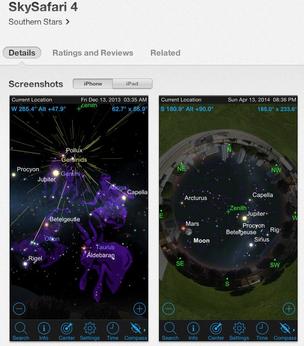 |
| Douglas Poland teaches an AP computer science class at Stone Bridge High
School in Ashburn, Va. As a part of Microsoft's TEALS program,
professional software engineers help teach the class. |
Three numbers are written on the board in Doug Poland's classroom at Stone Bridge High School: two, four and six.
"You have one guess to figure out the rule," he tells his Advanced
Placement Computer Science class on a Friday morning before winter
break.
The students -- sophomores, juniors and seniors -- team up to test
patterns of numbers they think will either fit or fail the rule Poland
has written down on a piece of paper ("ascending numbers").
As Poland circles the classroom, he tells the students they're
"thinking too logically."
These are the kinds of "warm up" activities
Poland says he likes to use to encourage his students to think
creatively. Then, after a short lecture on a new subject or particularly
challenging topic from a previous class, Poland lets the students loose
to program for the remaining hour of class time.
"They want to be hands on, they want to be doing as much as possible," Poland says.
The computer science program at Stone Bridge High School is an
outlier compared to other high schools throughout the nation. Students
at the high school in Ashburn, Va., have the opportunity to take
introductory and advanced placement computer science classes, and can
also participate in a computer programming club.
But in nine out of 10 high schools in the United States, there are no
computer science classes offered, according to Code.org, an
organization that encourages more students to learn programming and
coding skills. Additionally, in 33 of 50 states, computer science
classes do not count towards high school math or science graduation
requirements.
That lack of opportunity is adding to a growing concern among
educators and industry professionals who worry there will not be enough
educated workers to fill the ballooning number of computer science jobs.
Data from the Bureau of Labor Statistics show, for example, that by
2020, there will be 1.4 million new computer science jobs, but only
400,000 computer science students. The number of computer science jobs,
according to Code.org, is growing at a pace two times the national
average for job growth.
That's why companies such as Microsoft have implemented programs to
help engage more students in computer science at a younger age. The
company's Technology
Education and Literacy in Schools program (TEALS)
pairs 70 schools in 12 states with nearly 300 professional software
engineers who volunteer to help start computer science programs or
further develop existing programs, such as the one at Stone Bridge.
"TEALS came to us through one of our computer science engineers
who...had a particular passion around the need to help feed the future
pipeline of computer science engineers," says Lori Harnick, Microsoft's
general manager for citizenship and public affairs. "He saw that young
people, particularly high school students, don't always have access in
schools. So he decided on his own that he would stop by his neighborhood
school and volunteer to teach alongside the teacher."
Microsoft executives caught wind of the effort as more employees
began volunteering. By the 2011-12 school year, TEALS volunteers were in
13 schools, reaching more than 800 students. This year, more than 3,000
students are in computer science classes with TEALS volunteers, both
from Microsoft and other companies in the industry, such as Amazon,
Dell, Google and HP.
"In recent years we have seen a growing need and demand for computer
science professionals. Of course we get those typically out of college,
or graduate engineering programs," Harnick says. "But we've started to
recognize that that spark starts much earlier. If you haven't been
exposed to computer science until university, it probably won't be a
field you choose to pursue."
While the technical expertise TEALS volunteers can offer is key --
because many teachers don't have a background in the field -- it's also
important for students to see that computer science fields can lead to
real careers outside of the tech sector, says Dan Kasun, a TEALS
volunteer at Stone Ridge.
Kasun said skills students develop while learning computer science
can help them find careers not only in information technology and
software engineering, but also in games and digital application
development, data analytics and cyber security.
By 2018, for example, there are expected to be as many as 190,000
unfilled positions in the data analytics field alone, says Jim
Goodnight, chief executive officer of the data analytics company SAS.
"There's a huge, huge demand for people with these particular skills,
the ability to handle and work with large amounts of data to do the
analytics, to do forecasting and prediction," Goodnight says. "And
there's just a tremendous shortage right now.
Every company out there is
really interested in analytics -- they want people with analytical
talent."
As a way to reach more students, SAS helped institute a program at
North Carolina State University which admits about 80 students each year
to learn how to use the SAS analytics software and gain day-to-day work
experience in the field, Goodnight says.
"The thing that you want to do and the jobs you want to pursue, in
whatever industry, software is a big piece," Kasun told Poland's
introductory computer science class. "If you love football, great. You
can do data analytics and make tremendous advancements. The career
opportunities are absolutely huge."
Although computer programming is a science by nature, it's the
challenge, creativity and unpredictability involved in learning how to
code that drew many of Poland's students to his class.
"It's a microcosm of the whole school," Poland says. "There's someone
from just about every subgroup. You have students working with students
they wouldn't normally associate with."
For students who are more artistically inclined, Poland says,
designing games and applications is appealing as a creative outlet.
Jeanette Forbes, a senior in Poland's AP class, says it's fulfilling
to see a game she designed run well. But while traditional games
typically require the player to achieve a goal or complete an objective,
Forbes says she approaches the task a bit differently.
"I like to work on plot and how it feels to play, rather than doing main objectives and goals," she says.
Jenny Xing, on the other hand, says she's more drawn to the software
development aspect of computer science. Now a freshman at the University
of Virginia studying computer science, Xing compares software
development to working "behind the scenes" and says she enjoys thinking
analytically to develop software.
"Just being in a computer science class gives you an advantage not
only in college but also in life. Even if you don't like what you're
doing in the computer math class, at least you're exposed to it," Xing
says. "You have math and biology and all the sciences, but computer
science is a field of its own, so just knowing a little bit of it puts
you ahead."

 Vishav Mohan (name changed), a small entrepreneur based in Ludhiana, Punjab,
was running a sewing machine company that was losing money owing to the
decline in demand caused by a glut of cheaper models imported from
China. He is now setting up a unit to manufacture solar panels for solar
photovoltaic power generation on the same premises.
Vishav Mohan (name changed), a small entrepreneur based in Ludhiana, Punjab,
was running a sewing machine company that was losing money owing to the
decline in demand caused by a glut of cheaper models imported from
China. He is now setting up a unit to manufacture solar panels for solar
photovoltaic power generation on the same premises.




